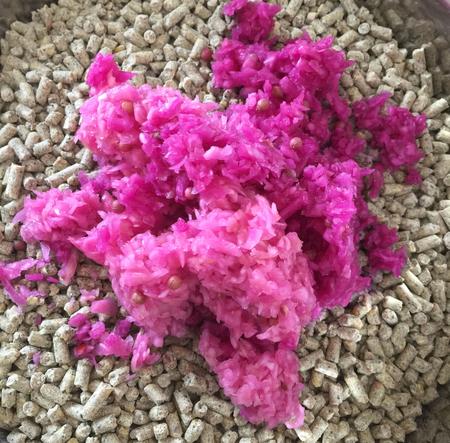
MORE ON LACTO-FERMENTING
Maintenance of Your Kraut
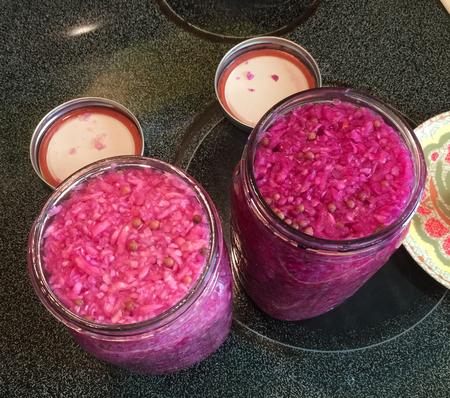
I always end up over-filling my jars when I make sauerkraut. The goal is to keep the cabbage about 1 inch or even 1.5 inches from the top of the jar. But if there’s cabbage leftover, I feel bad and stuff it in there.
After a couple days, it expands and starts to overflow. The tow at the left are just at the edge, about to overflow any minute.
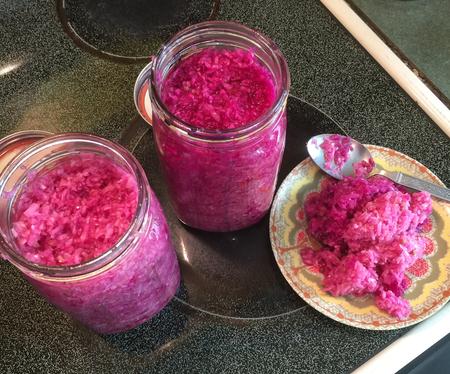
It’s easy to fix – just scoop some out until it is about an inch from the top.
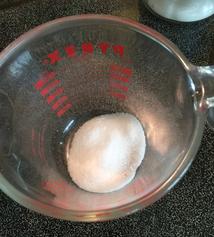
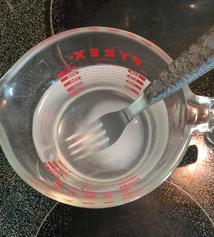
Add some more saltwater so everything is covered. I put 1 tbsp in a pyrex, then fill to 1 cup line. I give it a stir so it dissolves.
Remember not to use morton-style table salt for kraut – use sea salt or kosher salt. But these salts do take a bit longer to dissolve.
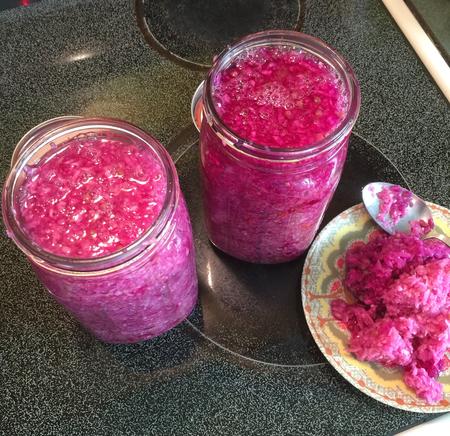
Do not use chlorinated tap water.
Add your extra saltwater or brine) to cover the cabbage.
I love the bright magenta color that purple cabbage changes into after it krauts a couple days.
It also lets you know things are cooking away properly as the color change indicates a change in the pH.

Wipe the edge of the jar with a clean paper towel. I also usually rinse the lids before putting them back on.

The scooped-off half-made kraut is fine to eat. I like the mild flavor. I also put a dash into the dog food. And don’t forget your chickens – they love it too.
Lacto-fermented foods are healthy for everyone!
Amazing Kimchi!
The first time I smelled homemade kimchi I was hooked. It is one of those scents that you feel you could just live in forever….
Following is a great recipe that I adapted from a recipe I found on Meghan Telpner’s fabulous website.
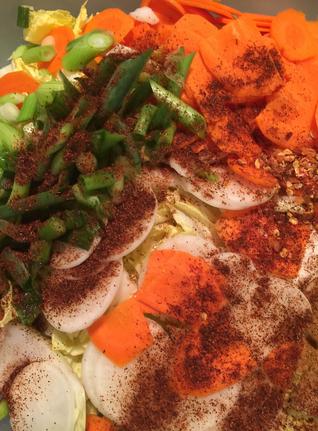
I usually cut this recipe back to make a gingery spicy mix in a 1 quart or a 1/2 gallon jar – this recipe is for two 1 gallon jars! And you can leave out many of the ingredients if you can’t find them…
A Simple Approach to Making Traditional Kimchi
1 head napa or savoy cabbage, washed and cut into square-shaped piece about 1 inch
6 green onions, chopped coarsely
2 carrots, sliced thin
about 20 thin disks of daikon radish (or you can use regular radishes)
5 garlic cloves, grated or sliced thin
about 30 disks of fresh ginger
2-3 Tbsp sea salt
1 tsp hot chili flakes
1 tsp hot chili powder
3 tbsp paprika
1 piece of kombu or sushi wrapping
Put all ingredients except for the seaweed into a big bowl. Pound well and then leave for about 10 minutes so that salt draws out the moisture from the veggies.
Pound again for another 5-10 minutes, until the veggies are well-softened.
Place the seaweed piece – whole into a half-gallon jar and spoon the pounded vegetables over and around it. Press the mixture down in the jar, squeezing out the air and getting all vegetables under the liquid. If you need to add a bit more brine, feel free to do so.
Seal jar loosely and keep at room temperature – about 75 degrees would work best. I put mine up on top of a high kitchen cabinet where its warmer. Let sit for 4-5 days, you may want to open the top to let air escape every once in a while. If you see a foaminess forming, just scoop it off with a clean spoon.
Start tasting it after 4 days. If you like the flavor, place it in the fridge to slow down the fermenting process. If you feel it needs more pickliness, continue to keep it at room temperature.
Should keep for 2-3 months in fridge.

Chopping the Napa Cabbage.

I don’t use any bruised outside leaves in the kimchi – but Matthew loves them!
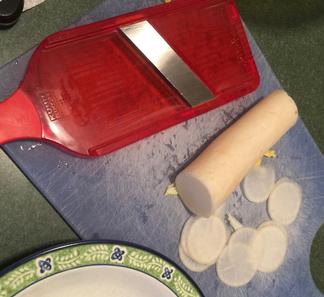
I use a simple mandoline-style slicer for cutting the daikon, carrots, garlic, and ginger into thin disks.
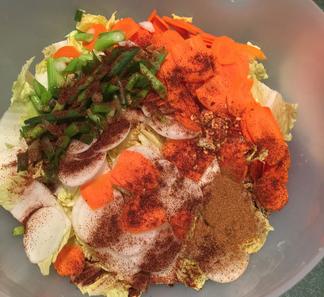
This recipe is simply gorgeous and smells great from start to finish!
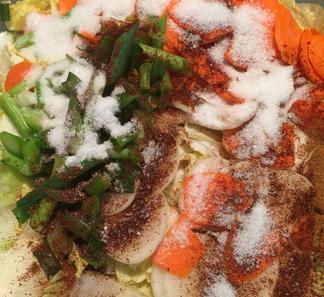
Adding the salt ….
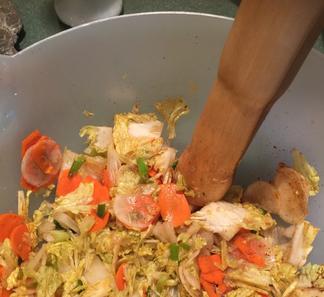
Mixing and pounding the vegetables. You should see a good amount of juice collecting…
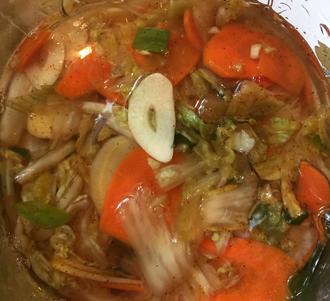
Jarred up and krauting away!

